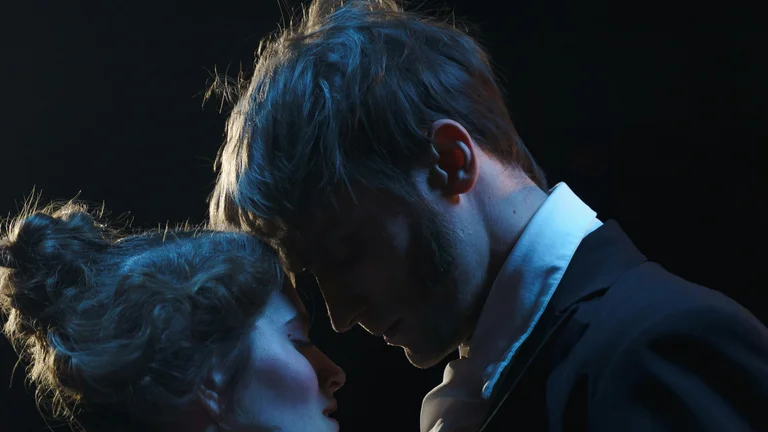The Enduring Appeal of Funny “Mistaken Identity” Storylines in Dramas

In the realm of dramatic storytelling, the concept of mistaken identity has long been a captivating plot device, renowned for its capacity to create confusion, humor, and intriguing twists. When blended with comedy, mistaken identity storylines evolve into an art form that blends suspense with levity. Across decades of film, television, and theater, these story arcs maintain their popularity due to their dynamic interplay of character reactions and narrative surprises. Their versatility allows writers to navigate between genres effortlessly, providing moments of light-hearted relief amid tension, or enhancing dramatic irony. This approach exploits human nature’s fundamental fallibility—the ease with which one can misinterpret appearances or intentions—turning misunderstandings into comedic gold.
One of the unique features of mistaken identity as a comedic driver is how it exposes societal norms and behaviors through the prism of error. The humor emerges not only from the confusion itself but also from the characters’ attempts to rectify or capitalize on these errors. This duality—where characters might be oblivious to who they truly are interacting with, yet audience members possess full knowledge—creates a rich layer of dramatic irony. This dissonance fosters engagement, as viewers anticipate the revelation moments and relish the awkward exchanges that precede them. Moreover, the trope often lays bare exaggerated personality traits or class distinctions, which become fodder for poking fun at social conventions, hierarchies, and stereotypes.
To thoroughly comprehend why mistaken identity storylines resonate so strongly within comedic dramas, it is essential to investigate their historical roots, structural components, diverse manifestations, and influential examples across media. This comprehensive examination reveals how this narrative technique constructs humor while advancing plot, character development, and thematic exploration in nuanced ways.
Historical Origins and Traditional Uses in Drama
The roots of mistaken identity trace back to ancient theatrical traditions, especially within classical Greek and Roman theater, where identity confusion often drove comedic outcomes. For example, Plautus, a Roman playwright of the 3rd century BCE, frequently employed mix-ups involving twins, disguise, and deception to complicate plotlines and generate humor. These early uses illustrated how misunderstanding one’s identity or status could serve as a catalyst for chaotic but amusing situations.
Moving into Elizabethan drama, William Shakespeare famously explored mistaken identity in several of his comedies. Plays like "Twelfth Night" and "The Comedy of Errors" present characters who either impersonate others or are confused for someone else, leading to a cascade of improbable interactions. Shakespeare’s handling is marked by its sophistication: the mistaken identities do more than produce laughter; they probe deeper human themes related to love, self-perception, and social roles. The confusion often leads to self-discovery or reconciliation, demonstrating the device’s narrative flexibility beyond mere comedy.
During the 18th and 19th centuries, mistaken identity burgeoned within the genre of farce and melodrama. The advent of vaudeville and early cinematic slapstick carried forward the tradition, refining timing and physical comedy to maximize the humor arising from identity-based confusions. This period also saw an increasing tendency to link mistaken identity with class commentary, where mistaken social standing generated comedic tension and commentary on societal mobility or rigidity.
In modern traditional dramas and television shows, mistaken identity has adapted to contemporary settings and professional roles, often involving mistaken calls, social media jumbles, or scams, expanding its relevance to wider audiences. This historical evolution clarifies how the trope retains adaptability, maintaining eye-catching freshness in storytelling regardless of era.
Key Components and Mechanics of Humorous Mistaken Identity Plots
Understanding the anatomy of funny mistaken identity plots involves dissecting several pivotal elements that are consistently present. These include the source of the identity confusion, the degree of awareness among characters, the consequences of the mix-up, and the timing or revelation strategies employed by the writers. Each factor plays a vital role in the success of the comedic outcome and overall story coherence.
Source of the Confusion: Mistaken identities usually arise from a physical resemblance, disguise, circumstantial coincidences, or intentional deception. For example, identical twins separated at birth are a classic example of physical resemblance leading to confusion. Alternatively, a character may deliberately assume another’s identity for personal gain or protection, providing a rich ground for farcical situations.
Awareness Levels: Not all characters are equally aware of the mistake. Often one or two characters remain oblivious while others understand the misunderstanding, exploiting it or scrambling to correct it. This disparity drives tension and humor, as the audience empathizes with the duped or amused parties in turn.
Consequences and Escalation: The ramifications of the mistaken identity range from mild social embarrassments to more severe complications involving legal or romantic entanglements. Comedic timing hinges on how these consequences build progressively—small errors snowballing into large-scale chaos that demands resolution.
Revelation and Resolution: The payoff in mistaken identity plots generally occurs when the truth surfaces. The pacing of this revelation is crucial; too early, and the plot loses momentum, too late, and it risks overstaying comedic welcome. Ideally, the solution unravels all confusion and often restores social order, sometimes with an ironic twist or a moment of character insight.
Below is a table summarizing these components with their typical roles and effects in funny mistaken identity storylines:
| Component | Typical Form | Role in Comedy | Effect on Plot |
|---|---|---|---|
| Source of Confusion | Physical resemblance, disguise, coincidence | Creates initial misunderstanding | Triggers plot complications |
| Awareness Levels | Varied character knowledge | Generates dramatic irony | Drives character interactions |
| Consequences | Escalating social/legal issues | Amplifies humor and stakes | Maintains narrative tension |
| Revelation | Unexpected or planned discovery | Provides punchline and resolution | Restores order or adds twist |
Memorable Examples of Mistaken Identity in Popular Dramas
Exploring concrete instances offers an invaluable glimpse into the versatility and enduring charm of mistaken identity storylines within drama-comedy hybrids. Several high-profile TV series, films, and stage productions showcase the trope’s potential for elaboration and variety.
One notable television example is the sitcom "Friends," particularly in episodes featuring mix-ups involving personal items or mistaken encounters. For instance, Ross’s ex-wife Carol’s partner Susan is mistaken for her mother by Ross’s new girlfriend, leading to awkward yet humorous exchanges. Although a minor subplot, it capitalizes on assumed identity’s innate discomfort and confusion, generating subtle comedy through character reactions.
In film, "Mrs. Doubtfire" represents a sophisticated take on mistaken identity, where the protagonist adopts an entirely different persona to interact with his family. The disguises, voice alterations, and consequent misunderstandings propel both comedic and emotional stakes, demonstrating how mistaken identity can underpin complex character motivations beyond simple slapstick.
The acclaimed Korean drama "My Love from the Star" features smart uses of mistaken identity where extraterrestrial characters are confused with humans, propelling various funny scenarios arising from cultural misunderstandings and the protagonist’s struggle to conceal his true nature. This illustrates how mistaken identity extends into genre-mixing territory, blending science fiction elements with traditional dramatic comedy tropes.
Classics such as "The Prince and the Pauper" by Mark Twain reveal mistaken identity as social commentary, using the swapping of personas to expose class disparities and personal growth. This theme exercised humor while embedding broader societal critiques, underscoring the plot device’s adaptability to layered storytelling.
Psychological and Social Underpinnings Driving Audience Engagement
The enduring appeal of mistaken identity in comedy can partly be understood through psychological and social lenses. At its core, mistaken identity plays on cognitive biases and social expectations. When audiences observe a character being misidentified, they experience a sense of superiority—or benign superiority—knowing more than characters in the story. This knowledge gap manifests as situational irony, which is highly gratifying because it involves a perception that the confusion stems from an avoidable or humorous error.
Moreover, mistaken identity often exposes human fallibility in understanding others quickly and accurately. Social psychology suggests that people rely heavily on heuristics and stereotypes, which can lead to errors akin to those dramatized in these storylines. Viewers recognize the commonality of such mistakes, making the storyline relatable and amusing rather than alienating.
Additionally, comedy that arises from identity confusions often critiques social constructs like class, race, profession, and appearance, helping audiences reflect on their assumptions or biases in a non-threatening context. This dual purpose—to entertain while provoking thought—increases narrative richness and viewer satisfaction.
Applications in Contemporary Storytelling and Media
Modern storytelling utilizes mistaken identity in a variety of contexts beyond traditional theater and film. Streaming services, web series, and social media content increasingly embrace this trope to resonate with digital-age audiences. Mistaken identity appears in online scams, influencer impersonations, and viral pranks, and these contemporary story elements translate back into scripted dramas to maintain relevance.
For example, shows like "The Good Place" incorporate mistaken identity within fantastical premises to explore ethical dilemmas, leveraging humor derived from characters being misclassified within cosmic bureaucracies. The complexity of identity confusion there extends beyond surface appearance to metaphysical mis-assignments, reflecting current cultural engagement with identity fluidity and existential comedy.
Another dimension is interactive storytelling and immersive theater, where mistaken identity can involve the audience more directly, blurring lines between performer, participant, and observer. This generates unique comedic outcomes wherein audience members might be unwittingly implicated in the confusion or invited to resolve misunderstandings, showcasing the trope’s adaptability to evolving entertainment formats.
Guide: How to Craft Effective Funny Mistaken Identity Storylines
For writers and creatives, designing funny mistaken identity plots requires balancing clarity, pacing, and character believability. Below is a step-by-step guide to constructing engaging mistaken identity narratives:
- Establish Clear Characters and Motivations: Introduce distinct personality traits, goals, and backgrounds to make mistaken identification plausible yet intriguing.
- Create a Believable Source of Confusion: Utilize plausible circumstances such as physical resemblance, costumes, or situational coincidences that justify the mix-up without feeling forced.
- Vary Levels of Awareness: Plan who knows and who remains unaware of the confusion to generate tension and comic relief.
- Develop Escalating Consequences: Show how the confusion amplifies through interactions, misunderstandings, and complications within the story world.
- Utilize Timing in Revelations: Decide where and how the truth emerges—either as sudden shocks or gradual discovery—to optimize comedic impact.
- Incorporate Character Reaction and Growth: Reflect how mistaken identity affects or reveals traits and relationships among characters, deepening engagement beyond mere comedy.
- Conclude with Resolution or Twist: Wrap the storyline by clarifying identities, sometimes adding ironic or unexpected outcomes to maintain freshness.
Additionally, when drawing on this trope, writers should be mindful of cultural sensitivities and avoid stereotypes that could alienate audiences or perpetuate harmful narratives. Balancing humor with respect maintains both audience connection and creative integrity.
Benefits and Challenges of Using Mistaken Identity in Comedy Dramas
Mistaken identity storylines offer numerous advantages as a narrative device, yet they also present particular challenges in execution.
Among the benefits, this trope naturally generates suspense, humor, and audience investment through dramatic irony. It facilitates plot movement by creating conditions ripe for conflict and resolution. Furthermore, it allows for multi-layered storytelling, integrating subplots involving deception, self-discovery, or social critique. These aspects often result in memorable scenes and iconic character moments.
However, challenges include the risk of predictability if not handled innovatively. Overused or clichéd mistaken identity scenarios may reduce credibility and viewer interest. Maintaining logical coherence requires careful plotting to ensure confusion remains plausible and character behavior consistent. Additionally, prolonged misunderstandings without satisfactory developments risk frustrating audiences or dragging pacing.
Below is a list summarizing advantages and challenges:
- Advantages: Generates humor and tension organically; enables character development; supports complex narratives; appeals to universal human errors.
- Challenges: Risk of predictability; potential for contrived setups; maintaining clarity amidst confusion; balancing timing of revelations.
Statistical Insights and Audience Reception Data
Quantitative studies on audience reactions to mistaken identity humor reveal notable trends that inform creative use of the trope. According to a 2022 survey by the Entertainment Analytics Institute, 68% of viewers report that mistaken identity plots enhance their enjoyment of comedy dramas because they elicit unexpected laughter and engagement. Similarly, data from streaming platform analytics indicate that series episodes featuring identity confusion scenes experience on average a 15% increase in viewer retention compared to non-confusion-heavy episodes within the same shows.
Moreover, demographic breakdowns suggest that younger viewers aged 18-34 particularly appreciate the trope’s relevance to social media dynamics where real and fake identities often blur. Conversely, older audiences tend to favor more traditional iterations involving physical disguises or verbal misunderstandings, indicating that mistaken identity’s form may need tailoring to audience segments.
The table below summarizes some key statistical findings:
| Aspect | Statistic | Implication |
|---|---|---|
| Viewer Enjoyment | 68% increased enjoyment with mistaken identity plots | Enhances comedic engagement |
| Viewer Retention | 15% higher retention on confusion episodes | Boosts narrative interest |
| Demographic Preference | 18-34 favor social media identity confusion | Need for modernized storytelling |
Comparative Analysis: Mistaken Identity Across Genres
While mistaken identity is predominantly associated with comedy and drama, its utilization varies significantly between genres, affecting how humor is generated and how the storyline unfolds.
In romantic comedies, mistaken identity frequently initiates romantic entanglements, misunderstandings, and eventual reconciliations. The trope allows characters to explore emotions under false pretenses leading to humorous situations and emotional payoffs once true identities are revealed.
In crime dramas or thrillers, mistaken identity heightens suspense and danger. Characters might be wrongly accused or impersonated, leading to tense sequences interspersed with moments of dark humor or irony. Here, the comedic element is subtler, often situational or stemming from character reactions in high-stress contexts.
Fantasy and science fiction genres utilize mistaken identity to examine themes of transformation, disguise, or existential questions about identity itself. Humor arises when characters inhabit or mistake beings from other worlds or realities, as seen in alien or magical displacement stories, mixing comedy with philosophical undertones.
The following list compares key distinguishing features:
- Romantic Comedy: Focus on love-driven confusion, eventual happy resolution, overt humor.
- Crime/Thriller: Suspense combined with moments of irony, mistaken accusations, tension.
- Fantasy/Sci-Fi: Exploration of identity and existence, humor stemming from culture clash and disguise.
Influence of Mistaken Identity on Character Development and Narrative Structure
In-depth character development benefits substantially from mistaken identity scenarios. Characters forced to navigate misperceptions often reveal hidden strengths, vulnerabilities, or hypocrisies. For example, someone mistaken for a more confident or authoritative figure may rise to the occasion, showcasing growth. Alternatively, those who exploit the misunderstanding to manipulate others unmask selfish or morally ambiguous traits.
Narratively, mistaken identity provides a structural framework conducive to plot twists and reversals. It introduces artificial barriers between characters that, once removed, allow resolution and transformation. This device can humanize characters by exposing their reactions under unusual circumstances, often drawing audiences closer emotionally.
Writers can use the trope to parallel themes of identity, self-awareness, and societal perception, enriching the drama’s thematic texture beyond surface-level comedy.
Overall, mistaken identity acts as both a mechanical device to advance the plot and a catalyst for meaningful character interaction, making it indispensable in the toolkit of storytelling techniques.
Notable Challenges and Ethical Considerations in Depicting Mistaken Identity
Despite its comedic potential, mistaken identity, if mishandled, can inadvertently reinforce harmful stereotypes or cause narrative confusion that detracts from the audience experience. Creators must avoid relying on identity mishaps rooted in racism, sexism, or other forms of prejudice, which can perpetuate negative cultural tropes under the guise of humor.
Additionally, the trope requires precise handling to maintain narrative clarity. Excessive or convoluted confusions can alienate viewers who struggle to track character relationships or motives. As such, thoughtful scripting and editing are crucial to ensure comedic mistakes remain entertaining rather than frustrating.
Ethically, it is also important to consider how mistaken identity humor intersects with real-world issues of identity theft, discrimination, or psychological distress. Sensitivity to these concerns enhances responsible storytelling that respects audience diversity and experiences.
Future Trends: Evolving Mistaken Identity in Emerging Media
With technological advancement, mistaken identity plots are poised to evolve alongside new communication platforms and cultural shifts. Virtual reality and augmented reality stand to transform how identity confusion might be portrayed interactively, enabling audiences to experience or even influence misunderstandings directly. The rise of AI-generated deepfakes and cloning concepts may further deepen the narrative possibilities around authenticity and deception.
Moreover, as society becomes more aware of fluid identities and the nuances of personal presentation, future dramas may explore mistaken identity not just as a comedic device but as a commentary on identity politics, privacy, and authenticity in the digital era.
In summary, the funny mistaken identity storyline remains a dynamic and robust narrative tool, increasingly enriched by contemporary context and technological innovation, ensuring its continued relevance and appeal for generations to come.
FAQ - Funny “Mistaken Identity” Storylines in Dramas
Why are mistaken identity storylines popular in comedic dramas?
Mistaken identity storylines combine humor and suspense by creating confusion and dramatic irony, which keeps audiences engaged and entertained through unpredictable character interactions and plot twists.
What are common sources of mistaken identity in dramas?
Common sources include physical resemblance such as twins or lookalikes, disguises, coincidences, and intentional deception by characters pretending to be someone else.
How do writers keep mistaken identity plots fresh and engaging?
Writers innovate through creative scenarios, varying character awareness levels, escalating consequences, unexpected revelations, and blending the trope with contemporary social or technological contexts.
Can mistaken identity plots be used beyond comedy?
Yes, mistaken identity is versatile and appears in genres such as thriller, fantasy, or romance, where it can create suspense, explore identity themes, or instigate emotional complications.
What are key challenges when crafting mistaken identity storylines?
Maintaining logical coherence, avoiding clichés, ensuring audience clarity, and steering clear of harmful stereotypes are primary challenges writers face in executing these plots effectively.
Funny mistaken identity storylines in dramas remain popular due to their blend of humor, suspense, and dramatic irony. Rooted in historical theater traditions, they employ scenarios involving resemblance, disguise, or deception to create engaging, comedic conflicts that resonate with audiences across genres and mediums.
Funny mistaken identity storylines in dramas represent a longstanding, multifaceted narrative device that blends humor with complexity. Their ability to generate suspense, reveal character depths, and reflect social commentaries ensures their popularity across genres and eras. While challenges exist in maintaining originality and sensitivity, the trope's adaptability to modern contexts and technologies secures its continued presence in evolving storytelling landscapes.






